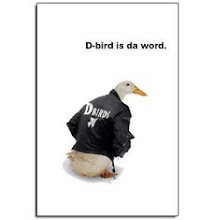I've been running school libraries for over twenty years, and it's utterly true to say that I learned at uni how to run a nineteenth to mid twentieth century library. Library catalogue cards (no computerisation for school libraries in the 1970s or early 1980s). Stocktake by calling from the shelf list, item by item.
Technology, in the context of my Dip.Ed., meant audio cassette tapes, film cameras, Fordigraph duplicating machines, reel to reel film projectors. And now (apart from audio cassettes for taping speeches, and they're close to dead, replaced by digital files - microcassettes always had format compatability problems) they're all gone. In most cases long gone. I couldn't thread up a film projector any more unless I gave it some serious thought (consulting an instruction book), and indeed film has been replaced by video, then DVD, and now the creep of online on-demand video and so forth (see, it's like the printing of posters mentioned on Friday). I haven't used my own film camera in some years, although the art students at school still use film at times, for obvious reasons. Fordigraph? Ah, one still remembers that restorative whiff of metho...and photocopies haven't been stinky for decades. So the technology I learned, when I learned to be a teacher and a teacher librarian, has pretty much all, in the way of technology, been superseded.
So the challenge is up to us, to learn the new stuff and think creatively about how it can serve the ongoing challenge of teaching: to engage our students and help them to learn. How do we construct the choice architecture of our classrooms?
From the library perspective, you still see teachers who haven't yet transitioned from the way things used to be - our 'stuff' was what we knew, our bank of knowledge hoarded and developed over the years - to the way things of necessity are, in the internet world. Our stuff now is how we teach, how we can bring our expertise, experience and insights into play in the classroom to make it a creative and engaging learning environment. We have to be prepared to learn with them as well as teach - and that's not easy for every teacher. And yet hasn't that always been part of our stuff, perhaps overshadowed by the knowledge?
You can observe a great deal in the library, as classes come through.
And I'll turn that searchlight on teacher librarians, too. At a recent social occasion, I was brought down to earth by talking informally with some high schoolers who told me about the teacher librarians they knew - all, without exception, cranky gorgons. Damn that stereotype. I know so many teacher librarians who AREN'T the stereotype, but still we have a long way to go, so the 'stuff' we think about and talk about at conferences and through mailing lists and blogs and with each other in the real world translates to practice. If our libraries aren't welcoming, and we aren't perceived as helpful, then it doesn't matter how much technology you have, or how hard you work at other things to make your library useful. Perception is so important.
I've been a cook on youth camps, years ago, and a leader too, and it's absolutely true that if the food isn't good, the whole camp is seen as poor: and conversely, if the food works, the camp works too. The atmosphere of a library, the environment physical and in human interaction, is so important. Libraries, first and foremost, are about people. Nobody's going to ask you for help if they don't think you'll help them - unless they're desperate. Conversely, where people feel valued, they'll be happy to spend time. An harmonious library team is an important part of that environment.
Through the years of being a teacher librarian, there are the things that don't change. Every lunchtime, there are students who come to the library to read, to research, to do a multitude of things: and some students who come to the library to feel safe. And year by year, that cast changes, as they venture out and others come for the same reason. High schools can still be scary places, for all sorts of reasons - bullying is so difficult to fully eradicate. Other things, good things, don't change - the delight in sharing books (we are loving Skulduggery Pleasant book 2 - can't keep it on the shelves!), in finding answers, in learning stuff. I have a bunch of post-it notes on my noticeboard of student requests for various fiction books, and each of those represents a vote of confidence, a positive interaction, a student feeling that the library can validate and serve their interests.
When a lesson flies, or a you're able to help kids individually travel a journey of understanding and really 'get' something, small or large - that's such a high. When you see a kid so eager to borrow a book they're almost hyperventilating. When you help a kid find something, or understand how to use a computer program to serve their needs, or... or...
or when you see that happy-kid grin...
...or when you just take an interest in them, or something that interests them, and help them feel not-invisible. I find Possum Magic's prose clunky to read aloud, but it's a book that connects with kids, and its idea of 'becoming visible' has such psychological resonance; on some level separate to language it makes sense to kids. I hadn't truly realised, for example, until the first student-art manga bookmarks were on the borrowing desk, how much that meant to those kids in validating them and their creative pursuits. I'm still learning this job. Every day.
Monday, May 5, 2008
Subscribe to:
Post Comments (Atom)






















No comments:
Post a Comment